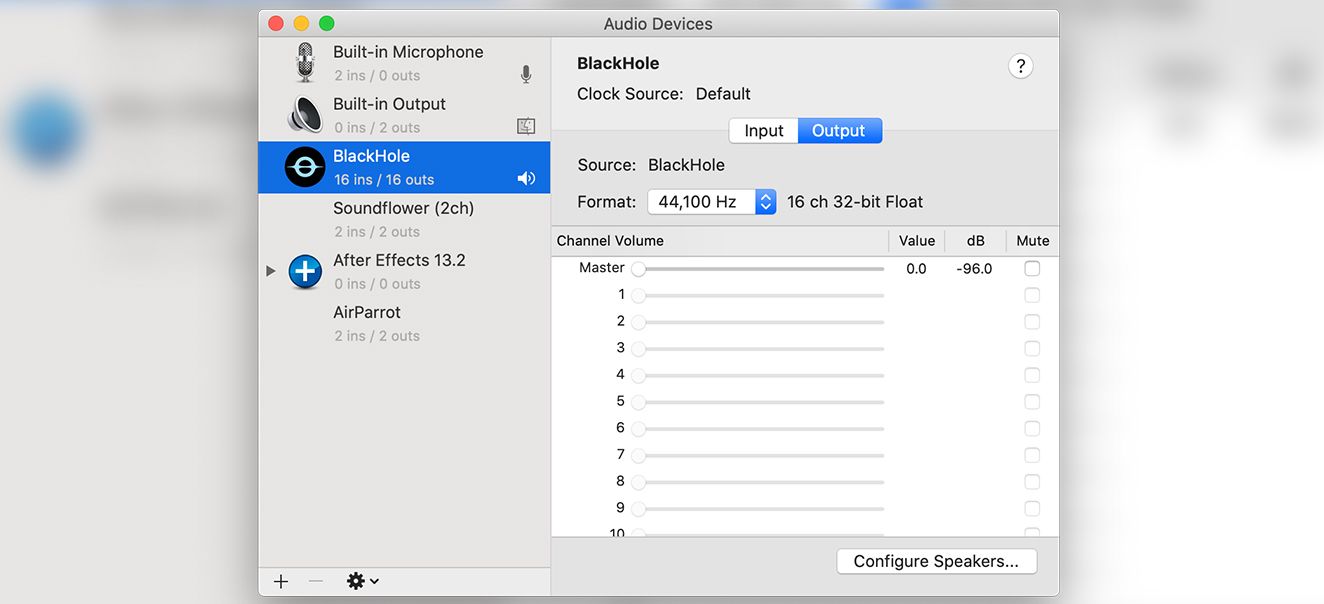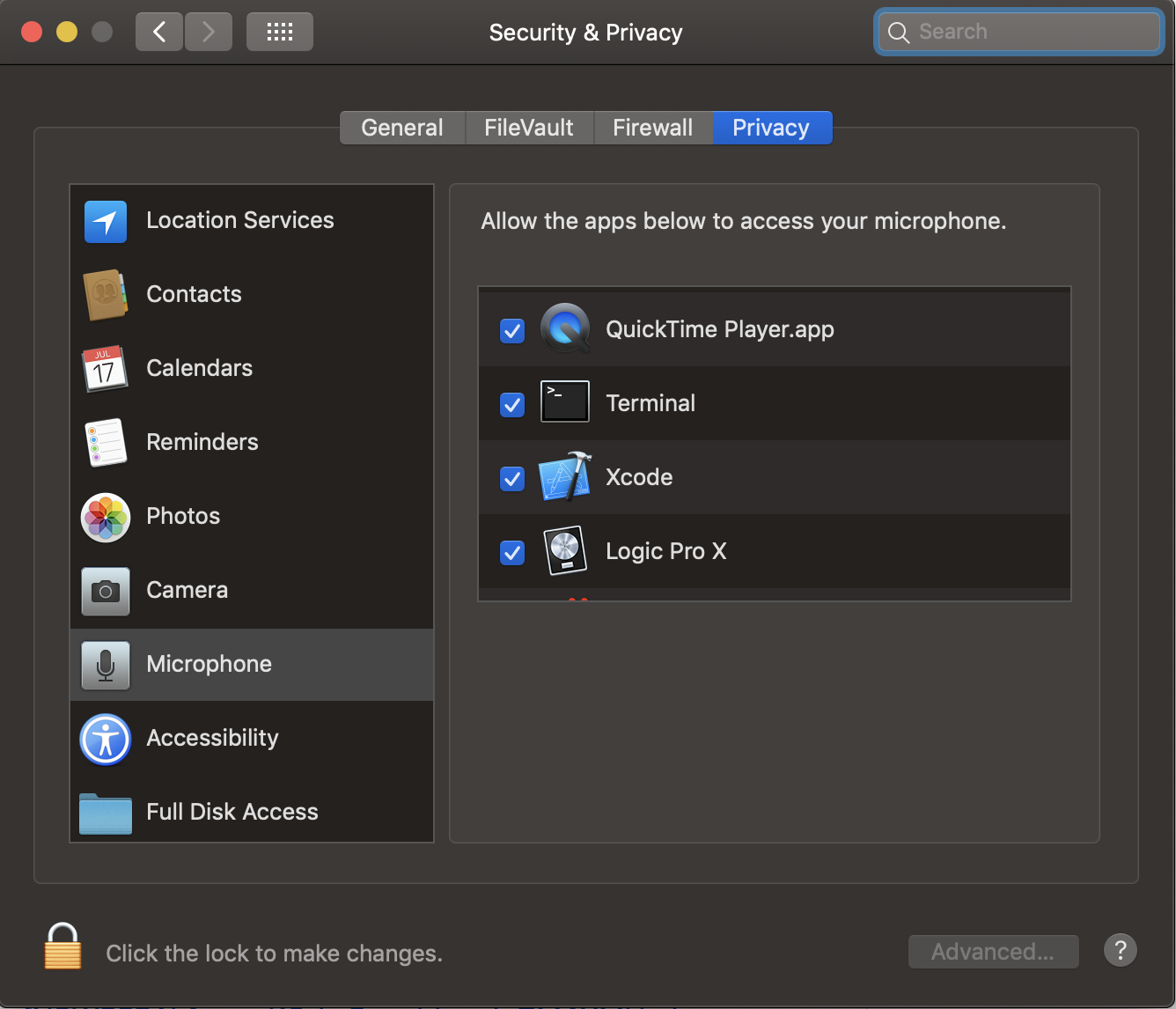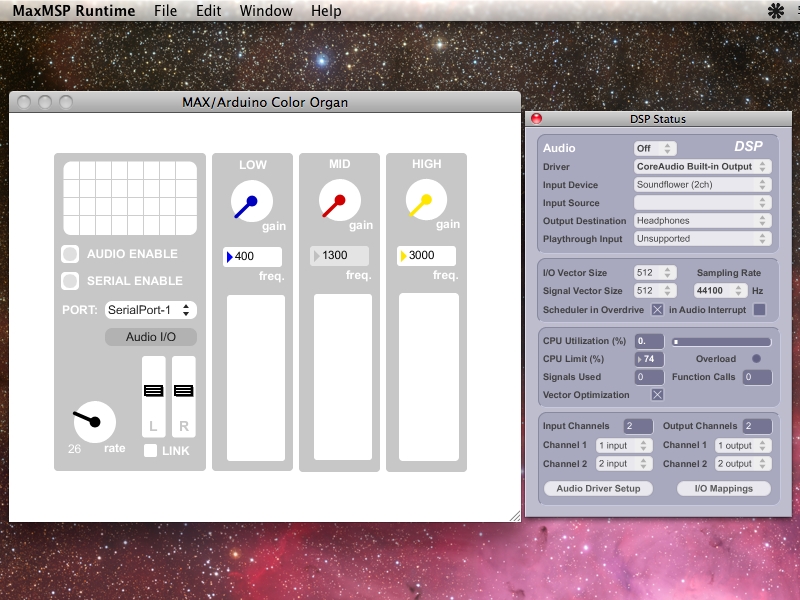SoundPimp is a software surround technology that radically enhances the quality of computer audio, offering a more exact and natural soundstage. For a head-on impression of the incredibly realistic SoundPimp effects, watch the audio enhancer demos.
And if SoundPimp has been installed on the computer, try the playlist examples created in Spotify, offering another head start introduction to the benefits of SoundPimp .
Regarding setup for Mac OS X…
A note on restricions in OS X Mountain Lion and later versions
There are two Build Configurations in the project: the Development build configuration builds Soundflower for the architecture of the machine you are using suitable for debugging. The Deployment configuration builds a Universal Binary version suitable for distribution. Both configurations link against the Mac OS 10.4 SDK. Hello everyone, I used soundflower to control volume and equalize the speakers of my external hd monitor. I used to chose 'Soundflower (2Ch)' as the audio output on my Mac settings and then chose the HDMI output on the SoundflowerBed app that remained on my taskbar. IMac Pro Update High Sierra 10.13.6 High Sierra 10.13 or 10.13.1 MacBook Pro with Touch Bar (2018) Sec Update 2019-001 (High Sierra).
OS X Mountain Lion may produce an error message saying the download file is damaged because it is not from the Apple app store or from an identified developer. To allow download and install of SoundPimp, go to the System Preferences, then Security & Privacy, then under the General tab change Allow applications downloadedfrom, to Anywhere
Read more: http://www.hometheatershack.com/forums/downloads-area/19-downloads-page.html#ixzz2ZNUiF0Yo
If this does not work, download the program without installer and store SoundPimp in a folder of your own selection, as informed in the email received with the purchase. The final alternative is to create a new admin user, from which SoundPimp may be installed.
Java installation
Soundpimp is Java cross platform software, so make sure the latest version of the Java runtime engine is installed on the computer, see java.com for install options. Be aware that when installing the Lion version of OS X, the Java platform is not (always) installed per default.
If in doubt, use “Finder”, go into “Applications” and then open the “Utilities” folder. Scroll down until you see “Terminal”. Open “Terminal”. To see if java is installed, enter the following at the command prompt:
SoundPimp installation
There is no installer for SoundPimp v1.8. Just unzip and put in a suitable folder. Start the SoundPimp app and enter the activation code that was received in the email receipt following the purchase. SoundPimp is now ready for use, but needs to be connected to audio via SoundFlower or Jack. For this, use one of the next setup variants.
Blackhole (SoundFlower is deprecated)
This tutorial is based on SoundFlower, but a number of customers have reported that it no longer works (2020). Therefore, in this tutorial, replace SoundFlower with Blackhole. They are identical applications in their feature sets.
Jack
The only reasons to use Jack instead of SoundFlower, is to achieve SoundPimp playback with Lip sync for video playback. For music, we recommend Blackhole.
Important note about restrictions on using Jack and Yosemite
The latest report from the Jack OS X group as of January 2015 is this: “It does work in Yosemite if you can select the audio output in the third party program. If the program your using relies on using the System Preferences sound device selection (Garageband, Final Cut, Quicktime, apple programs) then Jack does not work in Yosemite”.
However, if your media player is offering an audio output selector, then it will be a more convenient solution to use SoundFlower rather than Jack.
Installation of Jack
The particular implementation of Java for Mac OS X does not provide the functionality for selecting audio output lines and enable mandatory audio routing. Therefore, the Jack freeware audio system is used.
If this version does not work, take a look at versions available on the Jack for OS X website.
In Mac OS X terms, Jack presents itself as an Audio Device, entitled JackRouter, just as e.g. the built in speakers of the machine. If JackRouter becomes available as an option in the Sound Preferences of OS X, it is a very good sign that Jack was properly installed.
Soundflower Mac Os Catalina
Prior to starting the JackPilot the first time, it is a very good idea to verify in the Jack Preferences that the built-in Microphone is not set as the default input device for Jack, as this may cause (very) audible loops between speakers and microphone. Select anything but the Microphone.
Install the Patchage utility
There is an excellent freeware utility called Patchage which gives a grapichal overview of the routing setup done in Jack. It can even be used as an alternative to the Jack Connection manager in the setup sequences below. Here is a screenshot example:
Alternative 1 – Audio routing using Blackhole

This is the default setup for music playback. Select Blackhole as default for audio output (as SoundFlower in the below screenshot), then select this as input in the SoundPimp selector. Finally select (on the fly if you like) any of the available output channels.
IMPORTANT: Make sure that BOTH input and output volume levels of Blackhole is set to maximum. Click both tabs INPUT and OUTPUT to check this.
In this screenshot, Airplay was selected. Note that Airplay is a “name” for all available airplay devices, hence Airplay should be configured in the OS X control panel for audio playback. Bluetooth devices, however, can be selected directly in the SoundPimp output selector. In this screenshot, PhilipsBT is such a device.

Alternative 2 - Audio routing setup using Jack
A customer and collaborator has suggested (an updated and better) alternative setup to the below tutorials. Take a look.
To configure the audio system for proper use with internal media players like QuickTime, Safari built-in media streamer, iTunes, etc, closely mimic the setup illustrated in the following screenshot, where iTunes is used as the example. Once setup, it will work well.
With words, follow this sequence:
– Always start Jack first to ensure proper detection of the audio applications.
– Click Start in the JackPilot.
– Now JackRouter becomes visible as an output playback device in the OS X Sound Preferences (or the Audio Midi Setup). Now select JackRouter as the default device for sound output, as this will ensure that all applications will be routed to Jack connection manager.
– Click Routing in the JackPilot, this opens the Jack connection Manager (many names ;-))
– Thereafter, start iTunes and SoundPimp and see they become visible in the Jack Connection Manager.
– Play some music and verify that there is sound via Built-in Output. This way we know there is sound in the standard sound system, just to rule out any errors in that regard.
– Ensure that OS X system volume level of Built-in Output is set to maximum or a reasonably high level.
– Create the audio routing in the Jack Connection Manager as follows. Selections are done by single clicking on Send Ports to mark them blue, and by double clicking on Receive Ports to make them red (active). Make sure the following audio routing connections are defined:
- iTunes (Send Port) is connected to SoundPimp (Receive Port), exactly as shown in the figure above.
- SoundPimp (Send Port) is connected to System (Receive Port), i.e. speakers.
- Prevent audio Looping by ensuring that System (Send Port) is not connected to System (Receive Port). Unclick and see the red color on the Receive Port disappear.
- Prevent SoundPimp degradation by verifying that System (Send Port) is not connected to SoundPimp (Receive Port).
Important: Just make absolutely sure that there is one and only one route from the source, e.g. iTunes (Send Port) to SoundPimp (Receive Port), and likewise, that SoundPimp (Send Port) is only connected to System (Receive Port). It means as an example that iTunes should not be connected to System (Receive port). Sometimes Jack will connect things to System (Receive port) per default setting, so examine this and remove it. Also note that several application may be connected in paralell to SoundPimp (Receive Port).
– Play some music in iTunes. There should be sound. Proper volume level may be set from the SoundPimp or iTunes Dashboard.
– Now each audio application in use needs to be configured similar to iTunes. Per default, Jack will connect all applications to System (Receive Ports) once registered as the application is started. Thus, it is recommended to configure Safari, QuickTime, Chrome, your preferred media player and whatever other audio application in use. Make sure all these connections works properly with and are routed to SoundPimp, then finally Save Studio Setup from the menu of JackPilot. This studio setup may then be loaded with Load Studio Setup at any point of time. This will save you time.
– Close the Windows of Jack Pilot and its Connection Manager. There is no need to have them visible unless configuration changes are made.
Also know, that once setup properly, Jack will work well and be stable.
Configuration of SoundPimp with external sound systems
This section is only relevant if using Jack!
For connecting external sound systems via headphone outlet, please use alternative 1 or 2 above. However, when connecting the computer to external sound systems via sound cards typically connected via FireWire, USB or similar, , it is advised to mimic the setup in the following screenshot:
With words, follow this sequence:
– Configure the system with either alternative 1 or 2 above. In this example, our own Java app iRadio is running a the NRK Jazz radio channel, and this is app becomes “java” in the JackPilot Connection Manager.
– Observe that there is currently a limitation in Jack, in that it may not be configured with different input and output devices. This is seen bottom left in the screenshot above.
– In order to send audio streams to external sound system, therefore, use any DSP with audio input and output selectors. Proven applications are Garageband and Reaper, but most DSPs will the requirement, which is to be able to route the audio stream to an external soundcard. This is what Jack cannot help us with in the current version. Garageband is free, Reaper is shareware, and there is a myriad of free alternatives around also. Why not jump right into Garageband as it is already installed? We use Reaper, though:
– In the DSP define JackRouter as input and as output line select a suitable line on the external sound card. In the example above, a Motu sound card is used. See upper left; the setting for “output device”.
– Create a new track (in Reaper this is CTRL <T> ) , and make sure the audio is armed for recording and is monitored, exactly as shown on the track in the screenshot. Reaper defaults to mono track so this must be set to stereo. In Reaper, “armed for recording” captures the stream from input (JackRouter), and monitoring is mandatory in order to send the audio stream to output. It is similar in Garageband.
– In Jack Connection Manager, make sure sound is routed from SoundPimp (Send Port) to Reaper (Receive Port). Stop all other routing. However, BTW, the System (Receive port) can be added as well, so as to produce sound on the local laptop speakers in parallel. This can be convenient as a sound check.

– While at it, you may add VST or AU plugins into the Reaper track(s), and this is often a better solution than to use the VST host plugins of this or that mediaplayer, as such host may typically be less sophisticated than a dedicated DSP.
Soundflower For Mac Sierra
– Now close the applications and let them run in the background, leaving only the SoundPimp dashboard for volume, etc.
